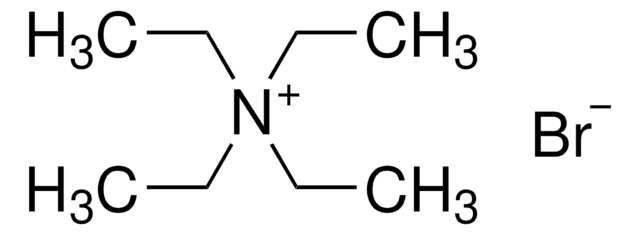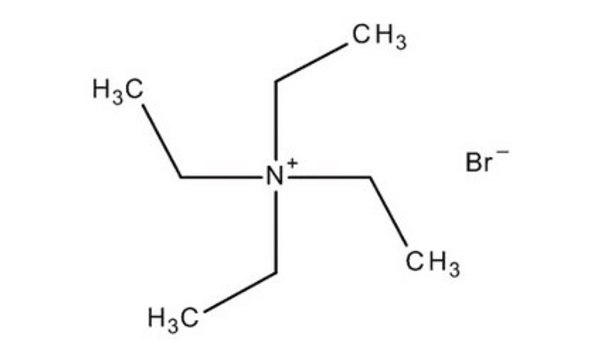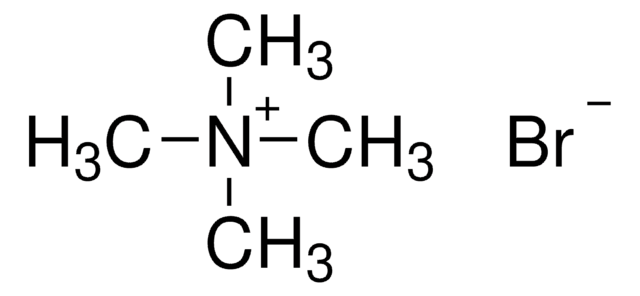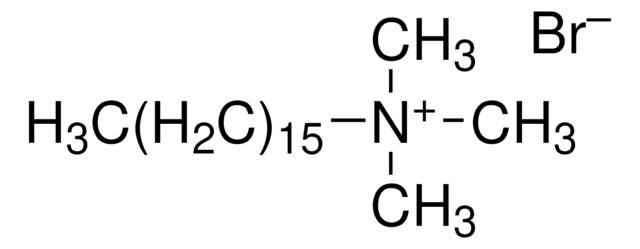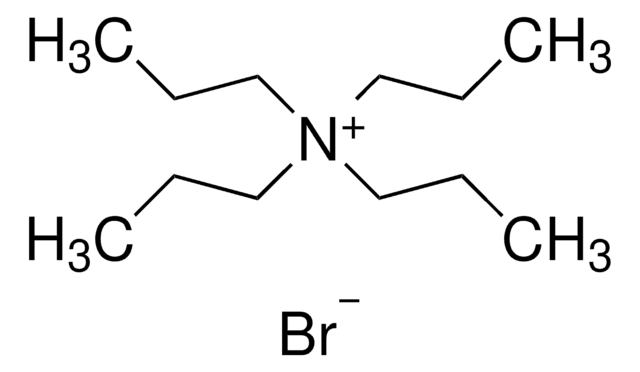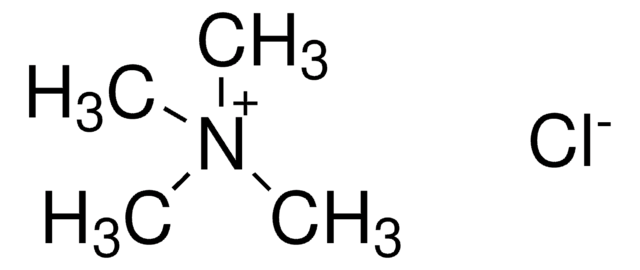86608
Tetraethylammonium bromide
suitable for ion pair chromatography, LiChropur™, ≥99.0%
Synonym(s):
TEA bromide
About This Item
≥99.0%
Recommended Products
description
cationic
Quality Level
Assay
≥99.0% (AT)
≥99.0%
form
crystals
quality
LiChropur™
technique(s)
ion pair chromatography: suitable
mp
285 °C (dec.) (lit.)
λ
10 % in H2O
UV absorption
λ: 240 nm Amax: 0.04
λ: 250 nm Amax: 0.03
λ: 260 nm Amax: 0.02
λ: 500 nm Amax: 0.02
suitability
corresponds to standard for filter test
SMILES string
[Br-].CC[N+](CC)(CC)CC
InChI
1S/C8H20N.BrH/c1-5-9(6-2,7-3)8-4;/h5-8H2,1-4H3;1H/q+1;/p-1
InChI key
HWCKGOZZJDHMNC-UHFFFAOYSA-M
Looking for similar products? Visit Product Comparison Guide
General description
Legal Information
Hazard Statements
Precautionary Statements
Hazard Classifications
Aquatic Chronic 3
Storage Class Code
11 - Combustible Solids
WGK
WGK 3
Personal Protective Equipment
Choose from one of the most recent versions:
Certificates of Analysis (COA)
Don't see the Right Version?
If you require a particular version, you can look up a specific certificate by the Lot or Batch number.
Already Own This Product?
Find documentation for the products that you have recently purchased in the Document Library.
Our team of scientists has experience in all areas of research including Life Science, Material Science, Chemical Synthesis, Chromatography, Analytical and many others.
Contact Technical Service